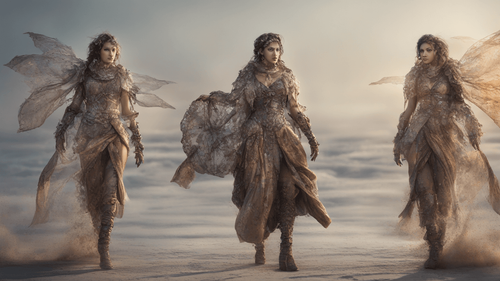
Introduction
In an era where technology constantly pushes the boundaries of creativity and innovation, the fusion of words and artificial intelligence (AI) has given rise to an awe-inspiring phenomenon: the transformation of textual expressions into vivid visual masterpieces. The marriage of linguistics and AI capabilities has opened new avenues for artists, marketers, and storytellers to communicate ideas, evoke emotions, and captivate audiences like never before. In this exploration of "Word to AI Image," we embark on a journey through the intricacies of AI-generated art, unraveling its mechanisms, applications, and profound impact on modern communication.
What is Word to AI Image?
At its core, "Word to AI Image" refers to the process of converting textual input, often in the form of sentences, phrases, or even single words, into stunning visual representations. This fascinating technology leverages the power of artificial intelligence, particularly deep learning and neural networks, to interpret the semantics and emotions embedded within the text and translate them into images that resonate with human perceptions.
The AI-generated art landscape has witnessed remarkable evolution, with algorithms becoming increasingly proficient at capturing the nuances of human language and translating them into captivating visuals. Through a combination of advanced computational techniques and artistic intuition, AI has evolved from producing rudimentary images to crafting intricate scenes that provoke thought and emotion.
Frequently Asked Questions
How does AI convert text to images?
AI converts text to images through intricate processes rooted in deep learning. Natural language processing models decode the textual input to extract meanings, emotions, and context. These insights are then mapped onto visual elements by generative adversarial networks (GANs) or similar architectures. GANs comprise a generator responsible for producing images and a discriminator that evaluates their authenticity. Through a cyclic learning process, AI refines its understanding and image creation, resulting in astonishing word-to-image transformations.
Can AI-generated art be considered genuine creativity?
AI-generated art sparks a philosophical debate about the essence of creativity. While AI lacks conscious awareness, it possesses the ability to blend existing patterns, emotions, and styles into novel compositions. While the process might not mirror human creativity, it introduces a new form of artistic expression, challenging traditional definitions and expanding creative horizons.
Are there copyright concerns with AI-generated artwork?
Copyright concerns in the realm of AI-generated artwork are multifaceted. Ownership of AI-generated art remains an ongoing discussion, as the creative contribution involves both human curators and AI algorithms. Legal frameworks are evolving to accommodate AI-generated works, addressing issues of attribution, originality, and authorship.
What impact does AI art have on traditional artistic practices?
The emergence of AI-generated art has prompted introspection within traditional artistic circles. Some view AI as a tool that complements human creativity, amplifying the potential for experimentation. Artists are increasingly collaborating with AI, blurring the lines between human and machine artistry. This interaction between human intuition and AI-driven insights fosters a new realm of artistic exploration.
How is the AI art industry evolving?
The AI art industry is undergoing a rapid transformation. As AI algorithms become more sophisticated, they enable artists to experiment with diverse styles, merge genres, and explore uncharted visual territories. Galleries and exhibitions dedicated to AI-generated art are gaining prominence, ushering in a new era where algorithms are celebrated as creators alongside human artists.
Can AI-generated art evoke genuine emotions?
AI-generated art's capacity to evoke emotions is a testament to its ability to interpret human expressions. While AI lacks personal experience, it identifies emotional cues in text and infuses them into visual compositions. The resulting artworks can resonate with viewers on an emotional level, stirring feelings analogous to those evoked by human-created art.
Conclusion
In the ever-evolving landscape of technology and creativity, the convergence of words and AI has ushered in a captivating artistic revolution. The phenomenon of transforming words to AI images transcends mere linguistic interpretation, encompassing a fusion of machine learning, artistic intuition, and human emotion. As AI-generated art continues to challenge conventions, redefine creativity, and reshape our perceptions, it beckons us to embark on a limitless journey of innovation, where the boundaries between language and imagery become beautifully blurred. Embrace the AI artistry, for it is an invitation to witness the dawn of a new era in human expression.